At the northern end of the Brymbo Heritage Site stands a towering sandstone wall stretching for around 8o metres. The imposing structure is a monument to industrial resolve and ingenuity and was constructed during the 19th century to both retain the land behind it and in order to load (charge) the furnaces. Coke and Iron ore could be lowered from above into the white heat below feeding the insatiable flames of industry.
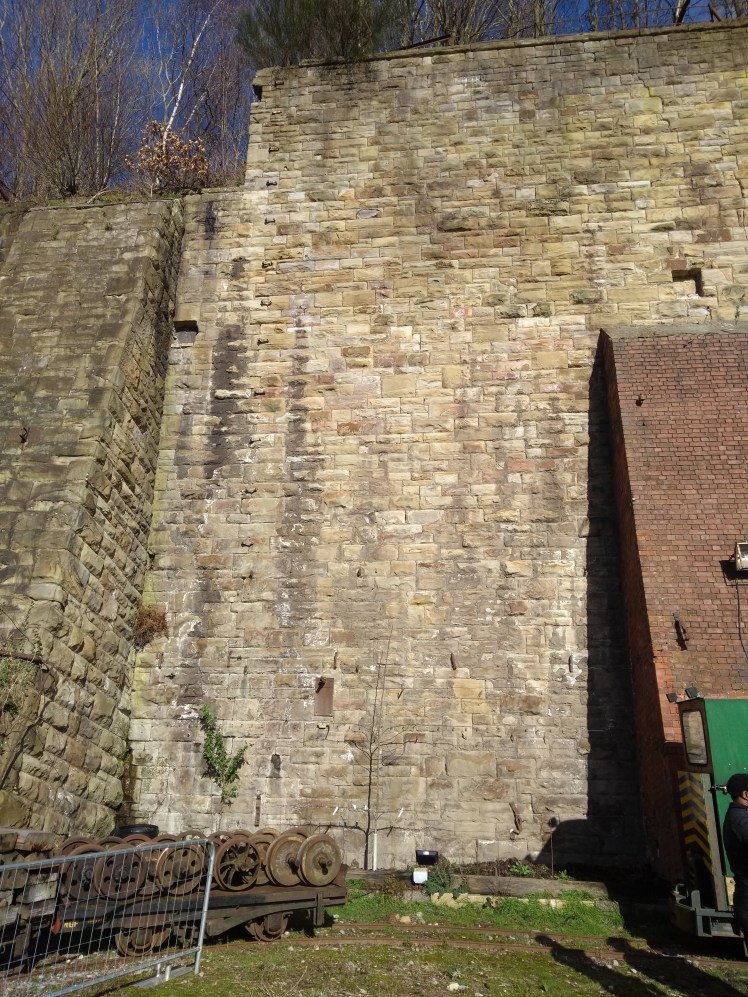
However, the ‘Old Number 1’ furnace stands silent, its companions long gone, having been dismantled in the 1930s. When the adjacent furnaces were removed, the large brick buttresses were added for extra support creating the bays which can be seen today. The wall having lost its purpose is now inhabited by nesting birds and opportunist seedlings.
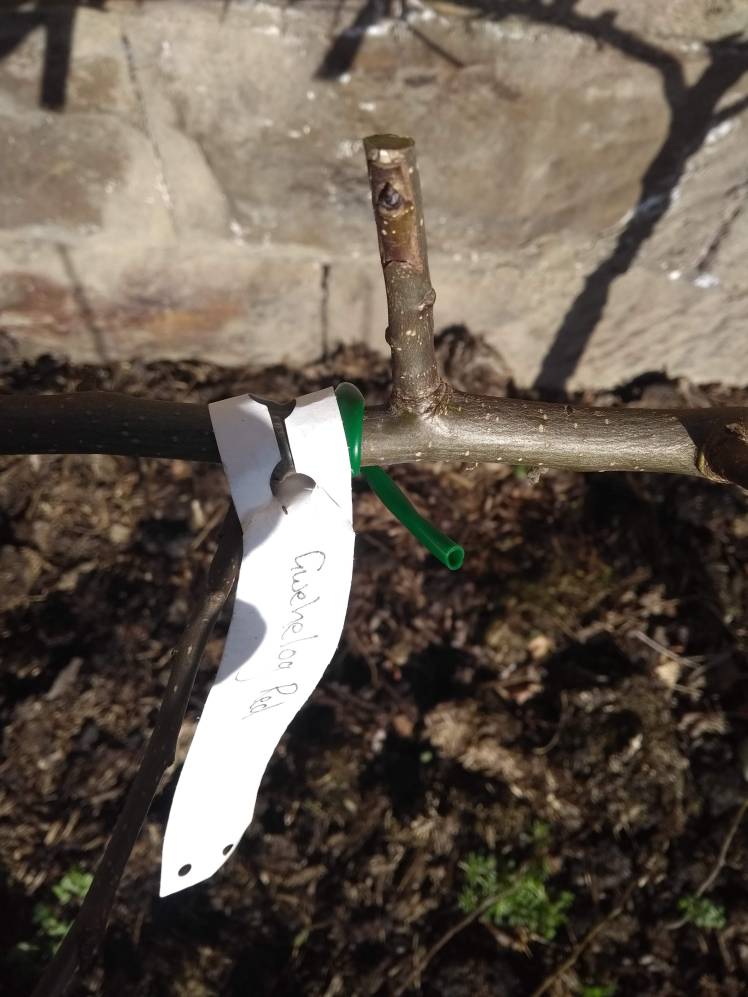
As part of the Brymbo Orchard Project the bays were identified as a perfect location for the ambitious project to graft a museum orchard of all Welsh Pear varieties onto three trees. During the day the thick walls backed by tonnes of soil are bathed in sunshine creating a warm microclimate against the stone, perfect for growing pears.
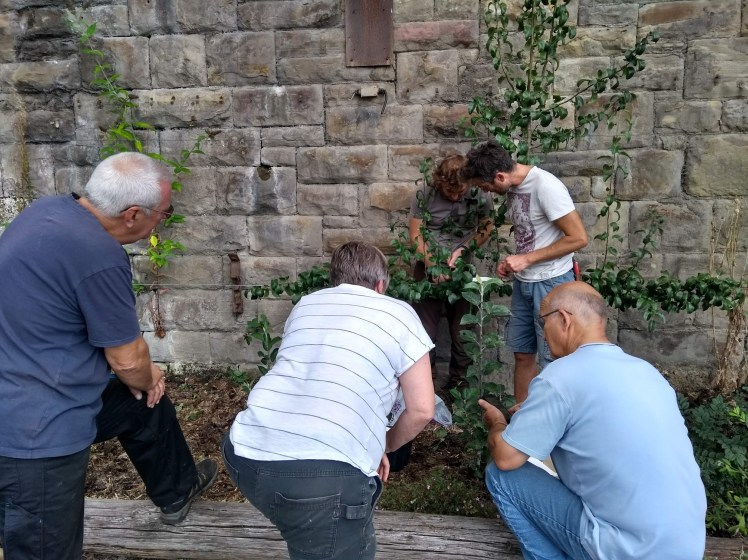
The trees were planted in 2017 and will eventually be trained in tiers as an espalier, about every 6 feet, until it reaches the top of the wall. The rootstocks are ‘Pyrus Communis’ or wild pear providing the required vigour, with ‘Beurre Hardy’ providing the structure. As the tiers produce laterals these will be bud grafted with different rare varieties such as ‘Gwehelog Red’ or ‘Rhydlydan’. Every tier will have several different varieties making each tree a unique collection.
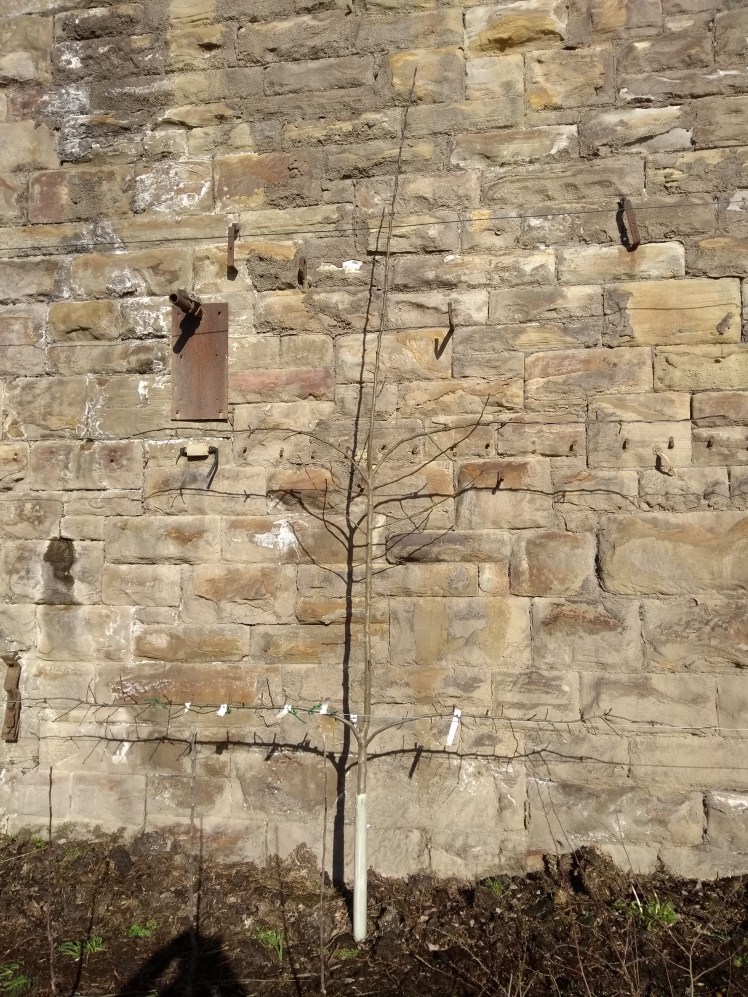
By preserving old and rare varieties the project aims to help create living gene banks which can be utilised in the future. This fits in with the ethos of the heritage site as a whole, preserving out industrial past for future generations. However, the process has not been solely about preserving old and rare varieties, but also about learning new skills. As part of the project training was provided in bud grafting, as well as the aftercare required to make them thrive.
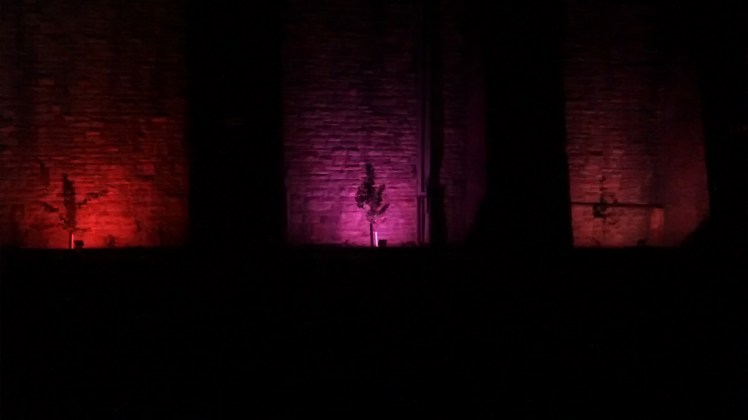
The walls have also provided the ideal temporary nursery for our apple grafts destined for one of our school community orchards. What the 19th century workers choked in dust and deafened by the sounds of industry would have made of our tranquil reinvention of their walls is hard to imagine. Hopefully the espaliers will create an impressive new feature which will also be around for generations.
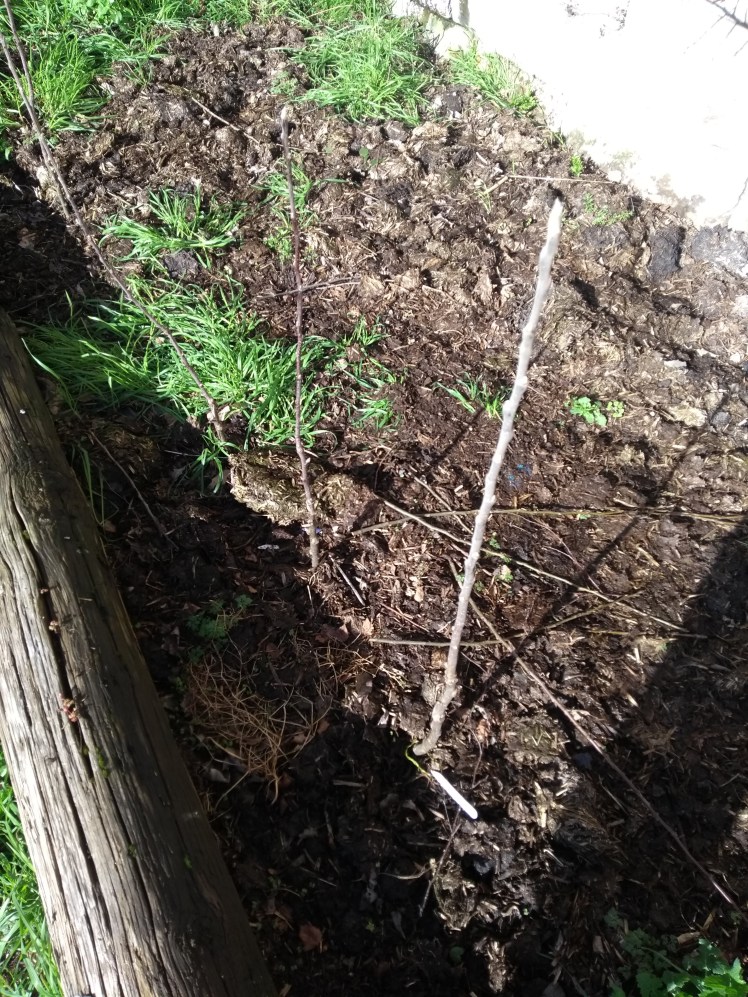
That is an excellent project, but would worry me. My difficulty with pears is that they get fireblight. It is bad enough when it disfigures free standing trees, but it is even worse if it takes out pieces of an espalier, or worse, a portion of the main trunk! It would not have bothered me decades ago, while the diseases was rare here. I suspect that if you are willing to take on such a project, that it is presently rare there too.
LikeLike
Fireblight is currently rare here, I have never seen it locally but given the current problem with increased diseases it may be in the future. Canker and scab are the worst problems for pears here given the wet and generally cool climate. I also lost a tree to collar rot but I try to select varieties in my own small orchard that have a better resistance to canker and scab.
LikeLiked by 1 person
When I was in school in the 1980s, fireblight was difficult to find. We needed samples for one of our classes. I had heard that it was a very serious problem back in the 1960s, so thought it odd that it could not be found. It became a very serious problem again for a while in the 1990s, and then sort of became scarce again. Then it flared up again just in the past few years. I can’t figure it out. It may never become a serious problem in your region.
LikeLike